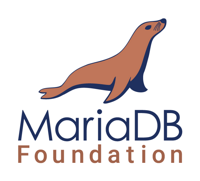In today’s digital age, having a strong online presence is crucial for tech businesses to thrive.
From reaching a wider audience to utilizing SEO and social media marketing, there are strategies that can help tech companies stand out in a competitive market.
We will discuss the importance of digital marketing for tech businesses, creating a digital marketing plan, utilizing SEO effectively, mastering social media marketing, and implementing successful email marketing tactics.
Whether you are a start-up or an established tech company, these tips will help you stay ahead of the game and connect with your target audience effectively.
Key Takeaways:
Why is Digital Marketing Important for Tech Businesses?
Digital marketing plays a crucial role in the success of technology companies and enterprise technology organizations by providing innovative ways to reach and engage with their target audience.
Effective communication with decision makers is a key advantage of digital marketing for tech businesses. Through targeted email campaigns, social media interactions, and personalized messaging, companies can establish direct lines of communication with top-level executives and influencers within their industry.
The creation of high-value content tailored to specific buyer personas is another powerful tool in the digital marketing arsenal. By understanding the needs, challenges, and preferences of their target audience, tech companies can develop content that resonates with potential customers and drives engagement.
In addition, leveraging strategies like influencer marketing can significantly enhance brand visibility and engagement. Partnering with industry influencers and thought leaders can help tech businesses expand their reach, build credibility, and foster trust among their target audience.
Reach a Wider Audience
Reaching a wider audience through digital marketing involves leveraging strategies such as search engine optimization (SEO), social media engagement, and impactful video marketing.
SEO plays a pivotal role in enhancing a tech business’s online visibility by ensuring that their website ranks higher in search engine results, driving organic traffic to their platform. Through targeted keywords, quality content, and optimization techniques, SEO boosts a company’s chances of being discovered by a broader audience.
Engaging with audiences on various social media platforms offers tech businesses a direct channel to connect with potential customers, promote products, answer queries, and build brand loyalty. By regularly sharing relevant content, responding to comments, and running targeted ad campaigns, companies can foster meaningful relationships with their followers.
Video marketing has emerged as a powerful tool for tech businesses to convey complex information in a visually appealing and engaging manner. By creating informative and entertaining videos, companies can effectively showcase their products, explain intricate processes, and connect with audiences on a deeper level, leading to higher conversion rates and brand recognition.
Targeted Advertising
Targeted advertising allows tech businesses to tailor their marketing efforts to specific buyer personas, utilizing animated infographics and industry-specific content to communicate effectively with their target audience.
Personalized messaging through targeted advertising enables companies to create content that speaks directly to the unique needs and preferences of their ideal customers. By developing detailed buyer personas, businesses can understand their audience better, crafting messaging that resonates on a personal level. Animated infographics play a crucial role in capturing attention and conveying complex information in a visually appealing way, making data more digestible and engaging.
By leveraging industry-specific content, tech companies can position themselves as authorities in their field, offering valuable insights and solutions tailored to the challenges and trends within that sector. This targeted approach not only enhances relevance but also fosters a deeper connection with the audience, driving stronger engagement and loyalty.
Cost-Effective Marketing
Cost-effective digital marketing strategies for tech businesses include utilizing paid online advertising judiciously, maintaining consistent brand communications, and implementing crisis communications protocols to safeguard reputation.
One of the key benefits of employing paid online advertising is the ability to reach a highly targeted audience, ensuring that your marketing budget is used efficiently to attract potential customers who are more likely to convert.
Consistent brand communications play a crucial role in establishing and reinforcing your brand identity, helping to build trust and recognition among your target audience. By maintaining a unified message across all marketing channels, tech companies can enhance brand loyalty and credibility.
In times of crisis, having well-defined communications protocols in place is essential for managing unforeseen challenges effectively. By being prepared with a crisis communications plan, tech businesses can respond promptly and transparently, minimizing potential damage to their reputation.
Measurable Results
Measurable results in digital marketing enable tech businesses to assess the impact of their campaigns, leveraging internal communications, public relations, and reputation management to maintain a positive brand image.
Internal communications play a crucial role in ensuring that all team members are aligned with the company’s goals and brand messaging. By fostering transparent information flow within the organization, digital marketing teams can enhance collaboration and efficiency.
On the external front, public relations initiatives help tech organizations build a strong reputation among their target audience and industry peers. Positive media coverage, thought leadership placements, and strategic partnerships can elevate brand visibility and credibility.
Effective reputation management strategies allow companies to address customer feedback promptly, handle crises proactively, and uphold trust in the brand. Monitoring online sentiment and engaging with customers in a timely and personalized manner are key components of maintaining a positive brand perception.
Creating a Digital Marketing Plan for Tech Businesses
Creating a comprehensive digital marketing plan for tech businesses involves understanding the needs of decision makers, collaborating with industry experts like Brittany Rothnem and Joe Lazauskas, and seeking guidance from agencies such as Communications Strategy Group.
Understanding the specific requirements and goals of decision makers within the tech industry is crucial to tailor strategies that resonate with their vision and objectives. Industry experts, such as Brittany Rothnem and Joe Lazauskas, can offer invaluable insights and trends that can shape the direction of the marketing plan. Collaborating with these professionals ensures that the strategies implemented are cutting-edge and aligned with the latest industry practices.
Partnerships with agencies like Communications Strategy Group bring a wealth of experience and resources to the table. Leveraging the expertise and diverse skill sets of these agencies can provide a broader perspective on market dynamics, audience segmentation, and innovative digital solutions.
Define Your Target Audience
Defining your target audience for digital marketing campaigns involves conducting thorough research to create detailed buyer personas, leveraging platforms like Google, LinkedIn, and Facebook for audience segmentation and targeting.
Once you have identified your target audience, the next step is to delve into demographic and behavioral data to refine your buyer personas. By analyzing factors such as age, gender, location, interests, and purchasing behavior, you can paint a clearer picture of your ideal customers. This detailed insight enables you to tailor your messaging and advertising content to resonate with specific audience segments. Leveraging targeted advertising on platforms like Google Ads, LinkedIn Ads, and Facebook Ads allows you to reach these segments effectively, increasing the likelihood of engagement and conversions.
Set Clear Goals and Objectives
Setting clear goals and objectives in a digital marketing plan requires input from key stakeholders such as CMOs, leveraging tools like BuzzStream and Onalytica for data analysis and performance tracking.
Establishing measurable goals and objectives is essential for aligning marketing strategies with overall business objectives. CMOs play a crucial role in goal setting, ensuring that marketing efforts are in sync with the company’s vision and mission.
Utilizing analytics tools like BuzzStream and Onalytica enables marketers to make informed decisions based on data insights. These tools provide valuable metrics to measure the effectiveness of marketing campaigns, identify areas for improvement, and track performance over time.
Choose the Right Digital Channels
Choosing the right digital channels for marketing campaigns involves analyzing industry insights from sources like Uptima and the Ascend2 Report, determining the effectiveness of social media and email campaigns in reaching the target audience.
These reports offer valuable data on consumer behavior trends on platforms such as Facebook, LinkedIn, Twitter, and Instagram, aiding in the selection of suitable channels based on audience demographics and engagement metrics. Marketers can leverage this information to tailor content strategies.
- Creating engaging posts that resonate with the audience’s interests
- Promoting interactive content like polls, quizzes, or live sessions
- Utilizing targeted advertising to reach specific user segments
Stay updated with evolving digital marketing trends to calibrate strategies effectively and enhance campaign performance.
Create Unique and Engaging Content
Crafting unique and engaging content is essential for tech businesses, focusing on high-value content creation strategies tailored for technology marketing and leveraging influencer partnerships to amplify brand messaging.
Delivering content that resonates with the tech-savvy audience is key to establishing credibility and increasing brand visibility in a competitive digital landscape. By creating content that addresses industry trends and challenges, companies can position themselves as thought leaders and attract a more engaged following.
Collaborating with influencers who have a strong presence in the tech community can further enhance reach and engagement, tapping into their established networks and credibility to drive brand awareness. This synergy between quality content creation and influencer collaborations opens up exciting opportunities for tech brands to connect with their target audience authentically and effectively.
Utilizing SEO for Tech Businesses
Utilizing SEO effectively is key for tech businesses to enhance online visibility and attract organic traffic through optimized on-page and off-page strategies, backlink acquisition, and guest blogging opportunities.
For technology companies, conducting thorough keyword research is essential to understand the terms and phrases their target audience is searching for online. By incorporating these keywords strategically into their website content, meta tags, and URLs, they can improve their chances of ranking higher on search engine results pages.
Implementing on-page optimization techniques such as optimizing page speed, using header tags, and creating high-quality, relevant content can further boost a tech company’s SEO performance. Off-page SEO strategies, like backlink building through reputable websites, help establish credibility and authority in the eyes of search engines.
Engaging in guest blogging on industry-related websites not only allows tech companies to reach a wider audience but also provides valuable backlinks that can climb up the SERPs and domain authority.
Keyword Research and Optimization
Keyword research and optimization are fundamental aspects of SEO for tech businesses, involving the identification of relevant industry-specific keywords and the strategic placement of these keywords across website content.
By conducting thorough keyword research, technology companies can gain valuable insights into what terms their target audience is searching for, allowing them to adapt their content to meet user intent. Optimization entails not only including these chosen keywords in meta tags, headings, and body content but also ensuring they are seamlessly integrated to enhance user experience and search engine readability. Utilizing tools like Google Keyword Planner can assist in determining search volume and competition levels for various keywords, guiding companies in selecting high-value terms to target.
On-Page and Off-Page SEO
Implementing on-page and off-page SEO strategies based on insights from the Ascend2 Report is essential for technology marketing success, focusing on optimizing website content and acquiring external links to improve search rankings.
Regarding distinguishing between on-page and off-page SEO for tech businesses, it’s important to understand that on-page SEO refers to optimization efforts made directly on the website itself. This includes optimizing meta tags, headings, and content quality to ensure search engines can easily understand and index the site.
On the other hand, off-page SEO involves actions taken outside of the website to improve its reputation and authority. This often includes link building, social media engagement, and influencer partnerships to increase the site’s visibility and credibility across the web.
Utilizing Backlinks and Guest Blogging
Leveraging backlinks and guest blogging partnerships through platforms like Traackr can significantly boost the SEO efforts of technology companies, improving domain authority and increasing online visibility.
By strategically acquiring backlinks, tech companies can enhance their website’s search engine ranking, attracting more organic traffic and strengthening their online presence. Through guest blogging collaborations facilitated by platforms such as Traackr, businesses can tap into new audiences, drive referral traffic, and establish credibility within their niche.
These partnerships offer a valuable opportunity for knowledge sharing and content exchange, enabling companies to showcase their expertise and thought leadership in the tech industry. This not only enhances brand reputation but also fosters meaningful relationships with other industry players, paving the way for future collaborations and networking opportunities.
Social Media Marketing for Tech Businesses
Social media marketing offers tech businesses a powerful platform to engage with their target audience, build brand awareness, and drive conversions through strategic content creation and paid advertising campaigns.
Regarding social media platforms for tech marketing, options like LinkedIn, Facebook, and YouTube are widely utilized for their distinct advantages. LinkedIn, known for its professional networking focus, is ideal for B2B tech companies looking to connect with industry professionals and decision-makers. Facebook, with its massive user base, can help tech businesses reach a wider consumer audience and drive traffic to their websites. YouTube, as a video-centric platform, serves as a valuable tool for showcasing product demos, tutorials, and customer testimonials.
To maximize impact, community engagement plays a pivotal role in fostering relationships and building trust with the audience. By interacting, responding to comments, and participating in discussions, tech companies can create a sense of belonging and loyalty among followers. A well-thought-out content strategy is essential for keeping the audience engaged and informed. Regularly sharing informative articles, engaging videos, and compelling visuals can help establish credibility and authority within the tech industry.
Alongside organic tactics, leveraging paid advertising on social media can significantly boost a tech business’s reach and visibility. By targeting specific demographics, interests, and behaviors, paid campaigns can ensure that content reaches the most relevant audience segments. Utilizing features like retargeting can help re-engage users who have previously interacted with the brand but not converted. Investing in paid advertising not only expands the outreach but also enhances brand recognition and drives conversions for tech businesses.”
Choosing the Right Platforms
Selecting the appropriate social media platforms for tech marketing initiatives requires input from CMOs to align platform selection with target audience demographics and engagement preferences.
CMOs play a crucial role in determining which social media platforms best suit the needs of the tech business. By analyzing the demographics of the target audience, CMOs can identify platforms where the majority of their potential customers are active. Evaluating platform features such as ad targeting options, content formats, and engagement tools is essential to ensure that the chosen platforms align with the business goals. Monitoring engagement metrics like reach, click-through rates, and conversions helps optimize the selection process for maximum impact and return on investment.
Engaging with Your Audience
Engaging with the audience in technology marketing involves fostering meaningful connections through brand communications, interactive content, and responsive customer service to build trust and loyalty.
- Brand communications play a vital role in conveying the core values and unique selling propositions of a tech brand to the audience. It is the voice of the company that shapes perceptions and establishes emotional connections.
- Leveraging interactive content such as quizzes, polls, webinars, and VR experiences can captivate users, encourage participation, and create memorable experiences, enhancing user engagement and fostering brand loyalty.
- Responsive customer service acts as a cornerstone in building lasting relationships with customers. Immediate responses, personalized interactions, and effective conflict resolution can significantly impact customer satisfaction and loyalty.
Utilizing Paid Advertising
Paid advertising is a valuable tool for technology companies to complement organic strategies like SEO, reach specific audience segments, and drive targeted traffic through paid search, display ads, and social media promotion.
This strategic approach helps tech businesses enhance brand visibility, especially in competitive markets where organic reach might fall short. By utilizing paid advertising, companies can boost their online presence, attract potential customers actively searching relevant keywords, and engage with their target audience more effectively.
Paid advertising allows for precise targeting capabilities that enable businesses to tailor their campaigns to specific demographics, behaviors, and interests, ensuring that their message reaches the right people at the right time. Through data-driven insights and analytics, companies can optimize their ad spend, improve ROI, and refine their marketing strategies for better performance.
Email Marketing Tips for Tech Businesses
Email marketing serves as a potent tool for tech businesses to engage decision makers, nurture leads, and drive conversions through personalized email campaigns that deliver valuable content and tailored messaging.
To effectively harness the power of email marketing in the tech industry, it is essential to pay attention to several key strategies.
- Building a targeted email list is crucial. This involves segmenting your contacts based on criteria such as demographics, behavior, and preferences to ensure that your messages resonate with the right audience segments.
- Personalizing content for decision makers by addressing their pain points and offering solutions that align with their needs can significantly increase engagement and conversion rates.
Building an Email List
Building a responsive email list for technology companies involves implementing automation tools to capture leads, segment subscribers based on preferences, and deliver relevant content that resonates with the audience.
Automation tools play a key role in streamlining the lead generation process, allowing tech companies to capture valuable contact information efficiently. By utilizing automated workflows and triggers, businesses can engage with prospects in a timely manner and nurture them through the sales funnel.
Audience segmentation is another vital aspect of email marketing success, as it enables companies to tailor their messaging to specific groups of subscribers. By categorizing contacts based on demographics, behavior, or engagement history, marketers can send targeted and personalized content that addresses the unique needs and interests of each segment.
Content personalization further enhances email engagement by delivering customized messages that resonate with recipients on a personal level. Whether it’s incorporating dynamic content based on user preferences or leveraging past interactions to recommend relevant products or services, personalized emails are more likely to capture attention and drive conversions. By combining automation, segmentation, and personalization strategies, technology companies can build a robust email list that fosters lasting customer relationships and boosts overall marketing performance.
Personalization and Automation
Personalization and automation are integral components of successful email campaigns, with expert insights from industry leaders like Joe Lazauskas guiding the implementation of A/B testing to optimize content performance and audience engagement.
Personalization is crucial in making recipients feel valued and engaged, as emails tailored to their preferences have higher chances of conversion. Harnessing automation streamlines processes, ensuring timely and relevant communication. A/B testing allows marketers to experiment with different email elements, such as subject lines or CTAs, to identify what resonates best with the target audience. This iterative approach refines campaign strategies, increases open rates, and ultimately enhances conversion metrics, boosting the overall effectiveness of email marketing efforts.
A/B Testing and Analysis
Conducting A/B testing and analysis in email campaigns is crucial for tech marketing success, with findings from the Tomoson Influencer Marketing Study providing valuable insights into optimizing email content, subject lines, and call-to-action strategies.
By integrating A/B testing methods into email campaigns, tech marketers can systematically evaluate different elements of their emails to determine what resonates best with their audiences. These tests help in understanding subscriber behavior, preferences, and responsiveness to various email variations. Leveraging data-driven insights from these tests allows marketers to make informed decisions to refine messaging, design compelling subject lines, and craft effective call-to-action buttons.
Studies have shown that email marketing campaigns with A/B testing can significantly boost open rates, click-through rates, and conversion rates, indicating the direct impact of data-driven strategies on campaign performance. By continuously analyzing and iterating based on A/B test results, marketers can continuously improve engagement metrics and enhance overall campaign effectiveness.
Frequently Asked Questions
What is digital marketing and why is it important for tech businesses?
Digital marketing is the use of various online channels and strategies to promote a product or service. For tech businesses, it is crucial because it allows them to reach a wider audience and establish a strong online presence.
What are some effective digital marketing tips for tech businesses?
1. Utilize social media platforms to showcase your products and services
2. Create high-quality and informative content to attract and engage potential customers
3. Optimize your website for search engines to increase visibility
4. Use email marketing to nurture leads and retain existing customers
5. Utilize data and analytics to track and measure the success of your campaigns
6. Collaborate with influencers and industry experts to increase brand credibility and reach.
How can tech businesses use SEO to improve their digital marketing?
Search engine optimization (SEO) is crucial for tech businesses to improve their online visibility and reach potential customers. By optimizing website content and using relevant keywords, tech businesses can rank higher on search engine result pages and attract more organic traffic.
What role does content marketing play in digital marketing for tech businesses?
Content marketing is a crucial aspect of digital marketing for tech businesses. It allows them to showcase their expertise and knowledge in their industry, establish credibility, and attract potential customers. By creating high-quality and informative content, tech businesses can position themselves as industry leaders and attract a loyal following.
How can tech businesses use paid advertising to boost their digital marketing efforts?
Paid advertising, such as Google Ads or social media ads, can be a highly targeted and effective way for tech businesses to reach potential customers. By utilizing precise targeting options, tech businesses can ensure their ads are seen by their target audience and increase brand visibility and conversions.
What are some common mistakes tech businesses make in their digital marketing efforts?
Some common mistakes include not having a clear marketing strategy, not utilizing data and analytics, not optimizing for mobile devices, and not utilizing social media effectively. It is important for tech businesses to have a comprehensive digital marketing plan and regularly track and analyze their efforts to ensure success.





